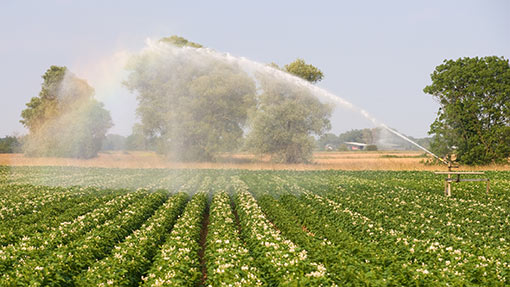Collaboration needed to manage water supplies

Greater collaboration between farmers, businesses, water companies and government is needed if water supplies are to be properly managed, according to academics.
A report by the University of Cambridge’s Institute for Sustainability Leadership says joint investment in reservoirs is a vital way to provide businesses with the opportunity to secure the water they need.
The report, Sink or Swim, came up with four models for financing reservoirs after working with nine companies across six sectors, including agriculture, retailers and property.
Published on 3 June, it says the models should prompt farmers, water companies and supermarkets to think about the possible ways they could collaborate to serve all of their business interests.
See also: Facing water restrictions on the farm
In England and Wales, the current systems of finance and regulation failed to consider cross-sector investment – something which needed to be addressed, the report’s authors say.
Water companies should not be left to shoulder the burden alone as the the risks from managing water affected multiple sectors.
Instead a collaborative approach would allow businesses to secure water supplies during droughts and reduce associated business risks, the report adds.
Chris Brown, Asda’s sustainable business director at Asda, said it made good business sense to work alongside the farming industry and others to better manage water.
“Inconsistent or unreliable supply of produce – caused by water scarcity or flooding – has a direct impact on supply chains,” he said.
“Retailers cannot act alone to manage necessary water supplies. A collaborative approach is needed.”
The CLA said the report put forward interesting ideas about how farmers could own a share in a reservoir they might have otherwise struggled to finance.
But it warned that the proposed strategies needed to be refined to become a viable proposition for farmers.
“What happens if there is an exceptionally dry summer or if a water company is the majority investor in a reservoir?” said CLA chief land use policy adviser Damian Testa.
“Who decides when each investor can take water and when? Farmers are likely to lose out in this situation.
“Governance issues need to be addressed with further thought given to the market practicalities of these models, so farmers view them as viable propositions.”
Any jointly financed reservoirs would need the capacity to cope with the demands of multiple investors as well as two or three consecutive dry years, rather than being built – as most farm reservoirs are – to cope with a single dry season, he added.
Finance models
1. Water companies provide 100% of the finance but financing is split between regulated and unregulated channels.
2. Investment is split between water companies and farmers. Farmers own a share of the reservoir and the water and trade additional water with the water companies.
3. Investment is split between retaers who finance the reservoir for farmers and private water users.
4. A Water Service Company acts as a middle-man for a wide range of investors.
